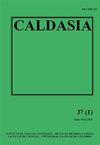利用相机陷阱研究兜帽臭鼬<i>大臭鼬</i>(食肉目:蝗科)丰度
IF 0.3
4区 生物学
Q4 PLANT SCIENCES
引用次数: 0
摘要
臭鼬作为水果、种子和昆虫的消费者,对生态系统很重要。兜帽臭鼬(Mephitis macoura)是北美常见的中型哺乳动物,但其数量在其分布范围内鲜为人知。在墨西哥南部的半干旱地区,我们部署了一个相机陷阱阵列来研究三个季节中食肉动物的数量。在2520个相机日的采样工作中,我们获得了41张带帽臭鼬的照片,平均每个站点6.2张照片,这意味着每100个相机日捕获1.63张照片。根据皮毛颜色模式和特定特征,我们确定了25只个体(每个季节7到12只臭鼬)。单个摄像机陷阱站记录了多达7个不同的臭鼬个体(平均3.6个个体)。3只臭鼬个体最大捕获次数为4次,平均每只臭鼬捕获1.4次。虽然调查区域适合中食肉动物,但由于摄像机之间的距离较长,没有观察到兜帽臭鼬的空间重新捕获。传统的捕获-再捕获模型估计,在干旱、雨季前和雨季,兜帽臭鼬的丰度分别为12.60、21.10和20.20只。捕获率高于墨西哥其他相机捕获调查报告,估计丰度是最低的,但在范围内,使用其他技术报告的物种。兜帽臭鼬的特殊特征对个体的识别是有用的,但我们建议在相机之间进行短距离测试,以实现空间再捕获,并应用当代空间捕获-再捕获分析。本文章由计算机程序翻译,如有差异,请以英文原文为准。
The use of camera traps to study the hooded skunk <i>Mephitis macroura</i> (Carnivora: Mephitidae) abundance
Skunks are important for the ecosystems as consumers of fruits, seeds, and insects. The hooded skunk (Mephitis macroura) is a medium-sized mammal common in North America, but its abundance is poorly known throughout its range. In a semiarid location in southern Mexico, we deployed a camera traps array to study the populations of meso-carnivores in three seasons. With 2520 camera days of sampling effort, we obtained 41 photographs of the hooded skunk, an average of 6.2 photographs per station, meaning a capture rate of 1.63 photographs/camera day per 100. Based on pelage color patterns and specific characteristics, we identified 25 individuals (seven to twelve skunks per season). Single camera-trap stations recorded up to seven different skunk individuals (an average of 3.6 individuals). The maximum number of capture-recaptures was four for three skunk individuals, and the average capture-recapture record was 1.4 per skunk. Although the survey area was appropriate for mesocarnivores, no spatial recaptures were observed for hooded skunks because the distance between cameras was longer. Traditional capture-recapture models estimated hooded skunk abundance at 12.60, 21.10, and 20.20 skunks during the dry, pre-rainy, and rainy seasons, respectively. The capture rate was higher than reported in other camera trapping surveys in Mexico, and estimated abundances were the lowest but, in the range, reported for the species using other techniques. Idiosyncratic characteristics of hooded skunks are useful to the recognition of individuals, but we recommend testing short distances among cameras to achieve spatial recaptures and to apply contemporary spatial capture-recapture analyses.
求助全文
通过发布文献求助,成功后即可免费获取论文全文。
去求助
来源期刊

Caldasia
PLANT SCIENCES-ZOOLOGY
CiteScore
1.30
自引率
16.70%
发文量
28
审稿时长
24 weeks
期刊介绍:
La revista está orientada a publicar contribuciones originales escritas en español o inglés relacionadas con la documentación, comprensión y conservación de la diversidad biológica. La revista contempla el tema de la biodiversidad en un sentido amplio y por tanto incluye trabajos en áreas como botánica, zoología, ecología, biodiversidad, biogeografía, taxonomía, sistemática, conservación, y disciplinas afines.
 求助内容:
求助内容: 应助结果提醒方式:
应助结果提醒方式:


